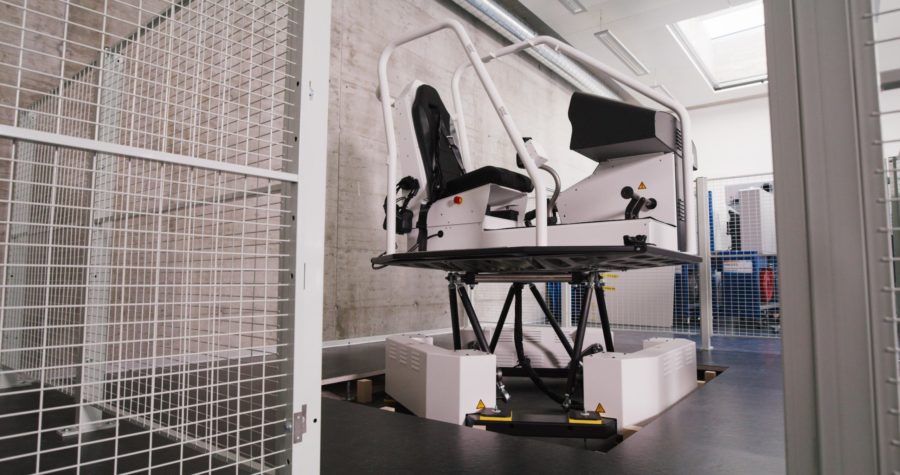September 14, 2021 – VRM Switzerland, a provider of professional flight training simulation solutions, has today announced that Zurich University of Applied Sciences (ZHAW) has selected the company for a research partnership and has purchased a virtual reality (VR) helicopter simulator from VRM Switzerland as a result.
At ZHAW’s Centre for Aviation, the team for Flight Mechanics and Flight Control Systems will use and further develop the simulator for a variety of research and development purposes, as well as in human factor and human‐machine‐interface research. According to VRM Switzerland, a motion‐based simulator is required because motion feedback to the pilot is fundamental to achieve the required realism in various flight conditions, such as hover operation while close to the ground or upset recovery training in general aviation.
VRM Switzerland develops and constructs VR simulators for helicopter pilot training that provide full-body immersion, giving pilots the feeling of being seated in a real helicopter. One unique feature of the company’s helicopter simulator is its highly dynamic motion platform, developed and built in‐house. It allows pilots to precisely feel the finest changes in attitude and touchdown on the ground and enables a realistic representation of flight behaviour. A pose‐tracking system also maps the pilot’s movements in the virtual environment, enabling operation of the exactly modelled cockpit, including haptic perception, as in the real helicopter.

Commenting on the partnership, Dr. Pierluigi Capone, team leader of Flight Mechanics and Flight Control Systems at ZHAW, said: “Compared to huge, expensive simulators with large dome screens, a VR device enables an affordable simulation with a small footprint. Virtual reality technology also allows research to be conducted in the fields of human factors and human- machine interfaces.”
The university will use VRM Switzerland’s solution mainly to simulate helicopters and tilt-rotor aircraft that can hover close to the ground. This requires a high‐resolution visual system and a dynamic motion system to provide pilots with the required visual references and perceptions. “This is fundamental to the reality of the simulation experience for the pilot,” noted Dr. Capone.
The university offers 9 different bachelor’s degree programs and its Centre for Aviation is the only one in Switzerland which offers a degree in aviation. According to Prof. Dr. Thomas Järmann, Head of Teaching at ZHAW, the majority of the university’s lecturers come from the world of business and carry out research and development projects together with partners from the industry. The results then flow directly into the lessons in order to provide an up‐to‐date and practical study program.

Prof. Dr. Michel Guillaume, Head of the Centre for Aviation at ZHAW, commented: “The Centre for Aviation has 10 years of experience in research using simulators and supported the development of the Pilatus PC24 with a permanently installed, in-house developed research and didactic simulator. With the cutting‐edge technology of VRM Switzerland’s product, we found a unique solution enabling innovative research as part of the bachelor’s and master’s degree programs in Aviation.”
Earlier this year, VRM Switzerland, in partnership with VR headset maker Varjo, received approval from the European Union Aviation Safety Agency, which marked the first time ever that the agency officially qualified a virtual reality–based solution for aviation training.
For more information on VRM Switzerland and its virtual reality-based helicopter training platform, please visit the company’s website.
Image / video credit: VRM Switzerland / YouTube
About the author
Sam is the Founder and Managing Editor of Auganix. With a background in research and report writing, he has been covering XR industry news for the past seven years.
